If you’ve spent time on the internet since the coronavirus began its devastating spread across the country, it is likely that you’ve seen the abbreviation WFH. The acronym, which stands for “work from home,” has become part of daily vocabulary for the countless employees whose companies have sent them to work remotely. But with employees isolated in their homes, the question of how to keep companies in sync and running smoothly has become top of mind.
CivicScience asked more than 2,600 U.S. adults about how they’re keeping in touch with their colleagues while stay-at-home orders are in effect. As the data show, the primary form of remote communication is email, with video calling not too far behind.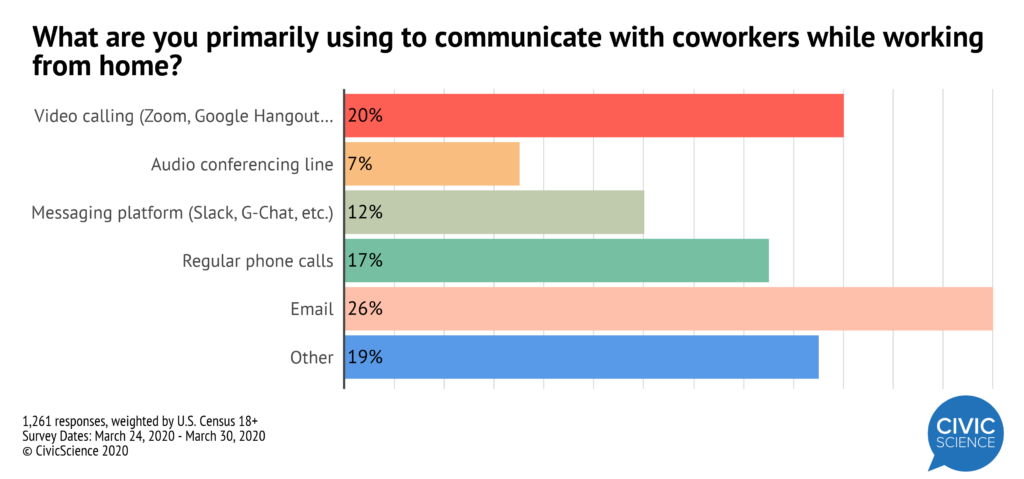 There are, of course, certain professions where keeping in touch online is especially necessary. Those in computer, technical, and medical professions are the most likely to be using messaging platforms, email, and audio conferencing lines, according to the data.
There are, of course, certain professions where keeping in touch online is especially necessary. Those in computer, technical, and medical professions are the most likely to be using messaging platforms, email, and audio conferencing lines, according to the data.
That said, keeping in touch with coworkers only applies to select industries and applies more often to higher income earners.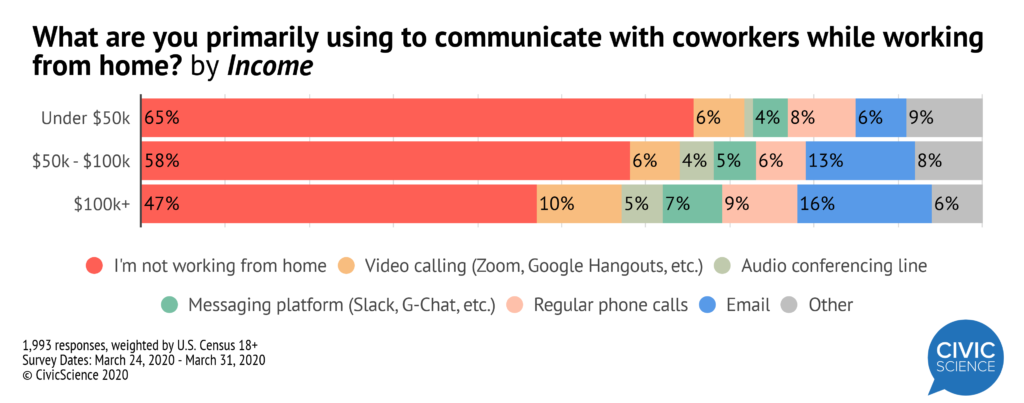
Zooming Into Focus
In terms of video conferencing, Zoom is by far the most popular video conferencing tool. This is especially true amongst younger adults, who are generally more likely than older generations to use video conferencing in the remote workplace as well.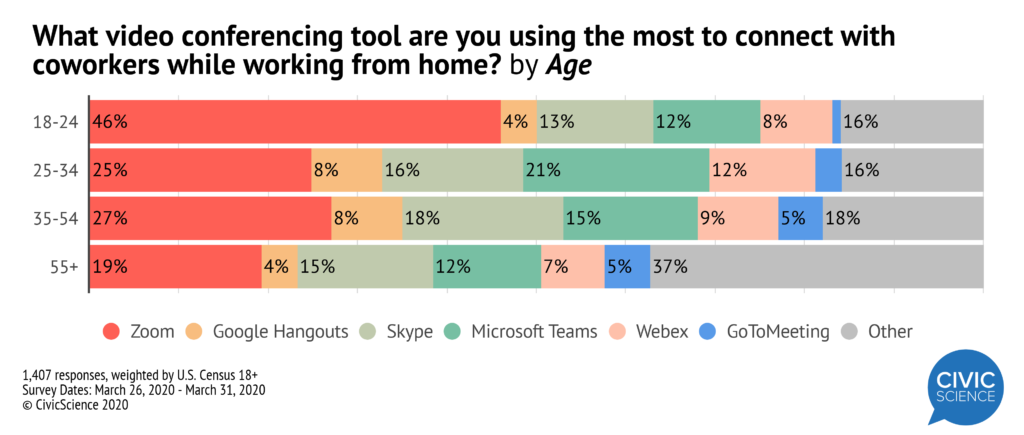 The data indicate a correlation between job happiness and work-from-home communication channels. People who use messaging platforms like Slack and G-chat as their primary communication while working from home reported the lowest levels of job satisfaction.
The data indicate a correlation between job happiness and work-from-home communication channels. People who use messaging platforms like Slack and G-chat as their primary communication while working from home reported the lowest levels of job satisfaction.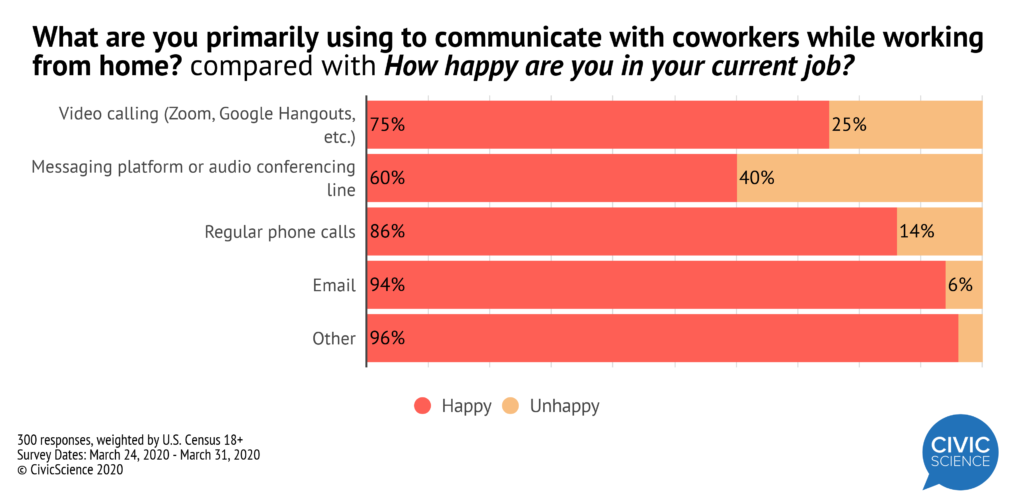 The research showed people who primarily use email and phone calls while working from home were the happiest in their current job. Video callers weren’t too far behind in terms of job happiness, but the results certainly weren’t as positive as they were for those using traditional phone and email.
The research showed people who primarily use email and phone calls while working from home were the happiest in their current job. Video callers weren’t too far behind in terms of job happiness, but the results certainly weren’t as positive as they were for those using traditional phone and email.
Phone and Video Calls Go from Day to Night
During non-working hours, phone calls and social media are the preferred methods of contact for home-bound Americans keeping in touch with family and friends.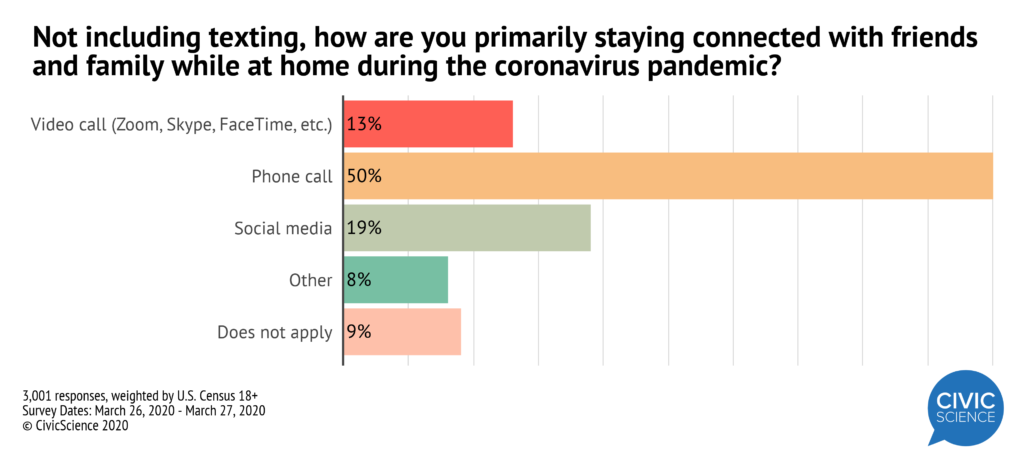 That said, video calling is still popular amongst the younger adults, as well as those most concerned about being in public spaces, perhaps due to its ability to provide a more in-person connection for those especially hard-hit by social distancing. Gen Z is the generation with over a third who say they are using social media to stay connected.
That said, video calling is still popular amongst the younger adults, as well as those most concerned about being in public spaces, perhaps due to its ability to provide a more in-person connection for those especially hard-hit by social distancing. Gen Z is the generation with over a third who say they are using social media to stay connected.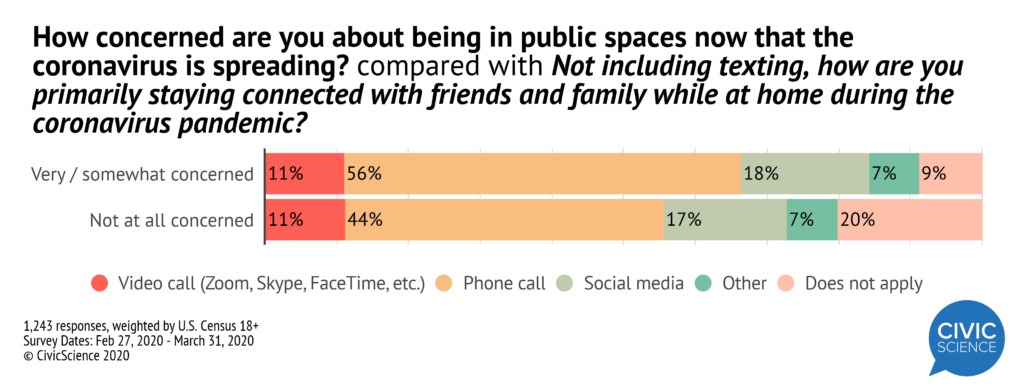 However, regardless of age or concern over public spaces, nothing beats picking up the phone for Americans during these physically isolated times.
However, regardless of age or concern over public spaces, nothing beats picking up the phone for Americans during these physically isolated times.
At this point, many have found that work from home has become life from home, with remote employment and personal time blending into each other more than ever before. And, as it turns out, many communication methods are following suit. While it’s true that emails are a distinctly professional form of communication and social media is distinctly personal, phone calls and video calls are bridging the gap, keeping coworkers connected when they’re more than six feet apart.








